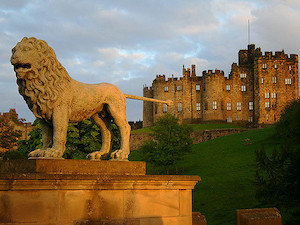Topics > Northumberland > Alnwick > Alnwick, Historical Account, 1848
Alnwick, Historical Account, 1848
ALNWICK (St. Mary And St. Michael), a market town and parish, and the head of a union, in the E. division of Coquetdale ward, N. division of Northumberland, of which it is the county town, 33 miles (N. by W.) from Newcastle, and 306 (N. by W.) from London; comprising the townships of Alnwick, Southside, Shieldykes, AbbeyLands, Canongate, Denwick, and Hulne Park; and containing 6,626 inhabitants. This place, which is of great antiquity, was occupied at a very early period by the Danes or Saxons, who called it Ealnwic, from its situation near the river Alne, and built a strong Castle for its defence on a site supposed to have been previously occupied by a Roman fortress. The castle thus erected, after the Norman Conquest, became the baronial residence of Ivo de Vescy, lord of Alnwick, to whom the barony had been given by the Conqueror. In 1093, it was besieged by Malcolm III., King of Scotland, and bravely defended by Mowbray, Earl of Northumberland; upon which occasion, Malcolm and his son Edward were both killed; the former, according to the Chronicle of Alnwick Abbey, by one of the garrison, under pretence of presenting to him, in token of submission, the keys of the fortress at the point of a lance; and the latter in his eagerness to revenge the death of his father, in an unguarded assault of the enemy, from whom he received a mortal wound. The remembrance of this siege is preserved by a cross erected about a mile north of the town, on the spot where the Scottish monarch is supposed to have fallen; it was rebuilt in 1774 by the Duchess of Northumberland, a lineal descendant of the king.
In 1135, the town was taken by David, King of Scotland; in 1174 it was besieged by William, at the head of 80,000 Scottish forces, but was successfully defended by William de Vescy, Robert de Stuteville, Ranulph de Glanville, and others, who took the monarch prisoner, and sent him to London, where he was kept in confinement till released by his subjects, who paid £100,000 for his ransom. In 1215, Alnwick was nearly reduced to ashes by King John; but it appears to have been speedily rebuilt, for, within five years from that date, Gualo, the pope's legate, summoned a general council of the Scottish bishops to be held here, for the regulation of some ecclesiastical abuses. In 1328, it was again besieged by the Scots, under Robert Bruce, but without success; and in 1411, the castle was embattled, and the town surrounded with a strong wall, to protect them from the predatory incursions of the Scots. Notwithstanding these fortifications, the town was again assailed by the Scots, who in 1448 set fire to it in retaliation for the burning of Dumfries by the English. After the battle of Hexham in 1463, the castle, which was in the interest of the house of Lancaster, was summoned by the Earl of Warwick; but the garrison, though unable to sustain a protracted siege, retained possession till they were relieved by Sir George Douglas, who, arriving at the head of a considerable force, afforded them an opportunity of retiring unmolested.
The town is pleasantly situated on the irregular declivity of an eminence rising from the bank of the river Alne, over which, at the northern extremities, are two neat stone bridges. The streets are spacious, well paved, and lighted with gas; the houses, built of stone, are chiefly of modern erection; and the inhabitants are amply supplied with water from cisterns and reservoirs, and by pumps in various parts, erected at the expense of the corporation. Near the south entrance of the town is a fine column, eighty-three feet in height, upon an eminence at the side of the road: it is called the Percy Tenantry Column, having been raised by the agricultural tenantry of the second duke of Northumberland, in 1816, in grateful commemoration of his Grace's liberality at various periods, when the distress of the times had rendered the payment of rent in many cases difficult, and in some altogether impracticable. There is also an elegant column, erected in 1814, on Camp Hill near the town, in commemoration of the various victories obtained by the British during the war, and of the restoration of peace. A subscription library was established in 1783; but this was dissolved in 1833, and an improved institution was formed in 1834, which now contains nearly 2000 volumes. In 1824, a mechanics' institute was founded, for which a handsome building was erected in 1831, containing a lecture-room, library, and other accommodations. The trade and manufactures of the place are not of much importance; yet there are some extensive breweries and tanneries, and the parish abounds with coal, limestone, freestone, and whinstone. The Newcastle and Berwick railway passes between the town and the sea-coast. The market, abundantly supplied with corn and provisions, is held on Saturday: fairs for cattle and horses are held on May 12th, the last Monday in July, and the first Tuesday in October; and there are other fairs, on the first Saturday in March and in November, for hiring servants. A fish-market was opened in 1830.
Alnwick is a Borough by prescription, having no royal charter of incorporation; though, from the capricious mode of choosing the freemen, which is ascribed to King John, it would appear that its prescriptive right was at least tacitly acknowledged by that sovereign: an established corporation is also recognised by an inoperative charter of Henry III., as well as by several ancient existing grants of the De Vesey family. The present corporation consists of twenty-four commoncouncilmen, who, at a meeting held on the 29th of September, nominate eight out of their number, and return the names to the steward of the manor, by whom, at the next court leet, four are appointed to act as chamberlains for the ensuing year. The commoncouncilmen are chosen from among the resident freemen of the several incorporated companies or fraternities, ten in number, viz., the Cordwainers, Skinners and Glovers, Merchants, Tanners, Weavers, Blacksmiths, Butchers, Joiners, Tailors, and Coopers. A chamberlain's clerk and other officers are appointed by the common-councilmen. The freedom is inherited by the sons of freemen, provided they have first been made free of one of the trading companies; it may also be acquired by a servitude of seven years to a freeman residing in the borough. Each candidate, on taking up his freedom, is subjected to the ludicrous ceremony of passing through a miry pool, thence called the "Freemen's well." A bailiff is appointed by the Duke of Northumberland for the manor. The corporation possess no magisterial authority, the town being wholly within the jurisdiction of the county magistrates, who hold petty-sessions on the first and third Saturday in every month. Courts leet and baron are held at Easter and at Michaelmas, under the Duke of Northumberland, as lord of the manor; and a manorial court is held also for the township of Canongate. The quarter-sessions for the county take place here at Michaelmas, in rotation with Hexham, Morpeth, and Newcastle. The county court is held here monthly; the powers of the county debt-court of Alnwick, established in 1847, extend over the registration-district of Alnwick. The election of parliamentary representatives for the northern division of the county, and also the election of coroners for the county, take place here. The town-hall, erected in 1731, is a handsome stone building surmounted by a square tower, and stands on the west side of the market-place, an extensive area in the centre of the town, on the south side of which is a large building erected by the late Duke of Northumberland, containing in the upper part a spacious assembly-room and a news-room, and affording underneath a covered area for the sale of butchers' meat and poultry. The house of correction, near the Green Bat, was erected in 1807.
The living is a perpetual curacy; net income, £175; patron and impropriator, the Duke of Northumberland. The impropriate tithes of Southside township have been commuted for £183. 15. 6. The church is a spacious and venerable structure, in the later style of English architecture, with a neat tower, and consists of a nave, north and south aisles, and a chancel. The roof of the chancel is richly groined and ornamented; on the sides are some ancient stalls carved in tabernacle work, and at the east end are three altar-tombs, on which are recumbent figures of stone, finely sculptured, but without date or inscription. The chancel was repaired and beautified in 1781, by the first duke of Northumberland; and in 1818, the church was repewed and repaired, the late duke contributing £300 towards the expense. On repairing the north aisle, two statues of stone, one representing a king and the other supposed to be the figure of a martyr, were found about two feet below the surface of the ground; they are now placed beneath the tower, at the western extremity of the church. St. Paul's church, erected by the Percy family, was consecrated in October, 1846: the living is in the gift of his Grace. There are places of worship for Independents, a United Secession Relief congregation, Presbyterians, Wesleyans, New Connexion of Methodists, and Unitarians; and a Roman Catholic chapel rebuilt in 1836. The poor law union of Alnwick comprises 62 parishes or places, and contains a population of 18,768.
The ancient castle, now the magnificent residence of the Duke of Northumberland, is a noble and stately structure comprising two wards, the whole put into a state of thorough repair by the grandfather of the present owner, with a due regard to the preservation of its original style, and its ancient character as one of the most splendid baronial residences in the kingdom. The extensive park and demesnes abound with beautifully varied walks, commanding a rich diversity of scenery, and a fine assemblage of strikingly interesting objects, among which the venerable ruins of Alnwick and Hulne Abbeys are conspicuous. Alnwick Abbey was founded in 1147, by Eustace Fitz-John, who endowed it for Præmonstratensian canons, and dedicated it to St. James and the Blessed Virgin: the abbot was summoned to parliament in the reigns of Edward I. and II. It continued to flourish till the Dissolution, when its revenue was estimated at £194. 7.; the remains consist of a gateway, which has been fitted up as a lodge to the parks (which are stocked with deer and a very fine breed of buffaloes), and, with the abbey grounds, forms a highly interesting feature. Hulne Abbey, about three miles from the town, but within the limits of the park, is beautifully situated on the slope of an eminence. It was founded about the year 1240, according to some authorities by William de Vescy, and according to others by Ralph Fresborn after returning from the crusades, for Carmelite friars, and is said to have been the first house of that order established in England; it was amply endowed by William de Vescy and his successors, and Fresborn became the first abbot. The site was granted in the reign of Elizabeth to Thomas Reeve and others, and was afterwards purchased by the Percy family. The remains, which are beautifully mantled with ivy, are very considerable; part of the buildings has been fitted up as a residence for a gamekeeper. Bale, the eminent biographer, was one of the brethren of this ancient monastery. Opposite to the remains of the abbey, a road, winding round a lofty eminence, leads to Brislee Hill, on the summit of which is a noble column, ninety feet high, with a spiral staircase leading to the balcony, which commands an extensive and delightful prospect, embracing the hills of Cheviot and Teviotdale; the hill of Flodden; the castles of Bambrough, Dunstanburgh, and Warkworth; the isle of Coquet, the port of Alnmouth, and various other interesting objects. At Alnwick, also, was an ancient hospital, founded by Eustace de Vescy, and dedicated to St. Leonard; likewise a chapel dedicated to St. Thomas: and in Walkergate-street is an old house, the doorway and windows of which prove its ecclesiastical origin. There are some remains of the town walls, which were defended by four square massive gateway towers, of which Bondgate, now the only one entire, was built by the son of the renowned Hotspur; on the site of Pottergate tower a handsome tower gateway has been erected, in the later style of English architecture. At Sheep-layers-on-the-Moor, and at Rugley-Moorhouse farm, are encampments supposed to be of Danish origin, but nothing is recorded of their history. Alnwick gives the title of Baron Louvaine of Alnwick to the Earl of Beverley.
Extract from: A Topographical Dictionary of England comprising the several counties, cities, boroughs, corporate and market towns, parishes, and townships..... 7th Edition, by Samuel Lewis, London, 1848.
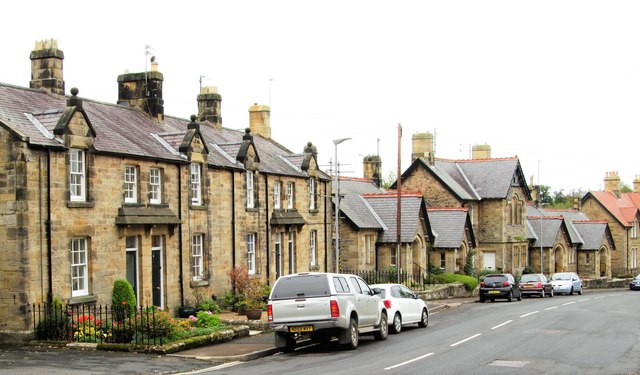
Co-Curate Page
Canongate
- Canongate is an ancient street in Alnwick which runs northwards down to Canongate Bridge. In the past Canongate and the area around it was a township. CANONGATE, a township, in …
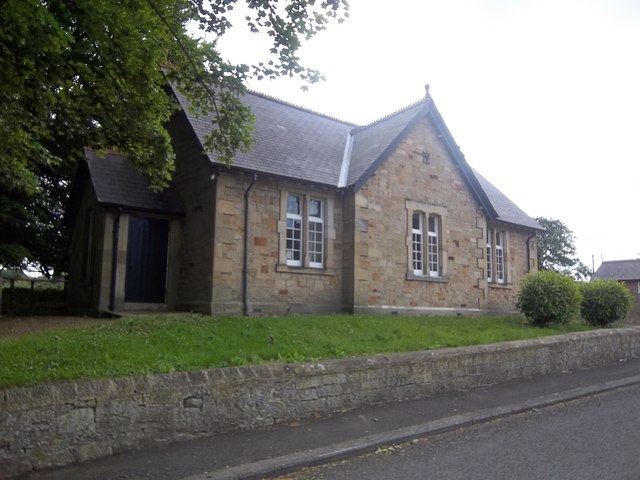
Co-Curate Page
Denwick
- Overview About Denwick Map Street View Denwick is a village in Northumberland, located to the north of the River Aln and about a mile and a half north-east of Alnwick. …
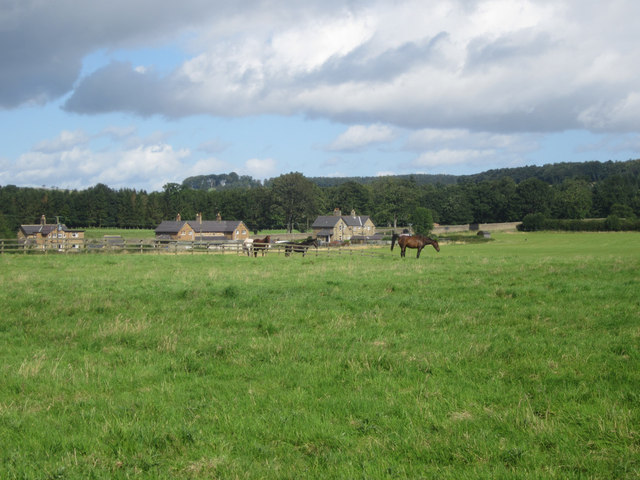
Co-Curate Page
Abbeylands
- Overview Map Street View Abbeylands is a hamlet in Northumberland, located near the River Aln, about 1 mile north of Alnwick. Historically, Abbeylands was a township in the ancient Parish …
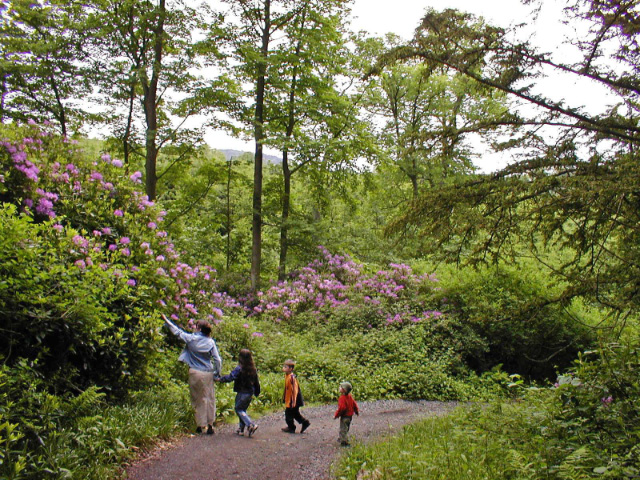
Co-Curate Page
Hulne Park
- Hulne Park is a large country park to the north-west of Alnwick, and part of the Duke of Northumberland's estates. It covers about 3,000 acres around the River Aln with …

Co-Curate Page
Shiel Dykes
- Overview Map Street View Shiel Dykes (Shield Dykes, Shieldykes) is a hamlet / farm, located about 5 miles south-west of Alnwick and 1½ miles north-west of Newton on the Moor …

Co-Curate Page
Alnwick South Side
- ALNWICK SOUTH SIDE is a township including the hamlets of Cauledge Park, Greensfield, Grumwells Park, Hobberlaw, Rugley, Shieldykes, and Snipe House. It comprises an area of 4,760 acres, the property …


Co-Curate Page
Canongate
- Canongate is an ancient street in Alnwick which runs northwards down to Canongate Bridge. In the past Canongate and the area around it was a township. CANONGATE, a township, in …

Co-Curate Page
Denwick
- Overview About Denwick Map Street View Denwick is a village in Northumberland, located to the north of the River Aln and about a mile and a half north-east of Alnwick. …

Co-Curate Page
Abbeylands
- Overview Map Street View Abbeylands is a hamlet in Northumberland, located near the River Aln, about 1 mile north of Alnwick. Historically, Abbeylands was a township in the ancient Parish …

Co-Curate Page
Hulne Park
- Hulne Park is a large country park to the north-west of Alnwick, and part of the Duke of Northumberland's estates. It covers about 3,000 acres around the River Aln with …

Co-Curate Page
Shiel Dykes
- Overview Map Street View Shiel Dykes (Shield Dykes, Shieldykes) is a hamlet / farm, located about 5 miles south-west of Alnwick and 1½ miles north-west of Newton on the Moor …


